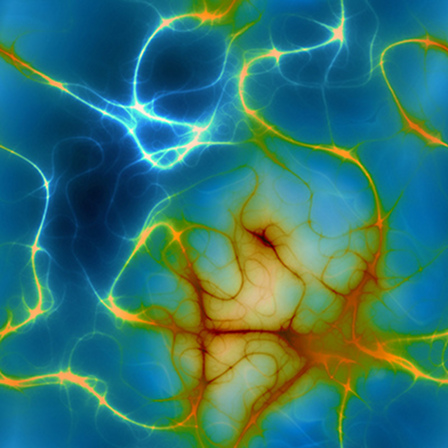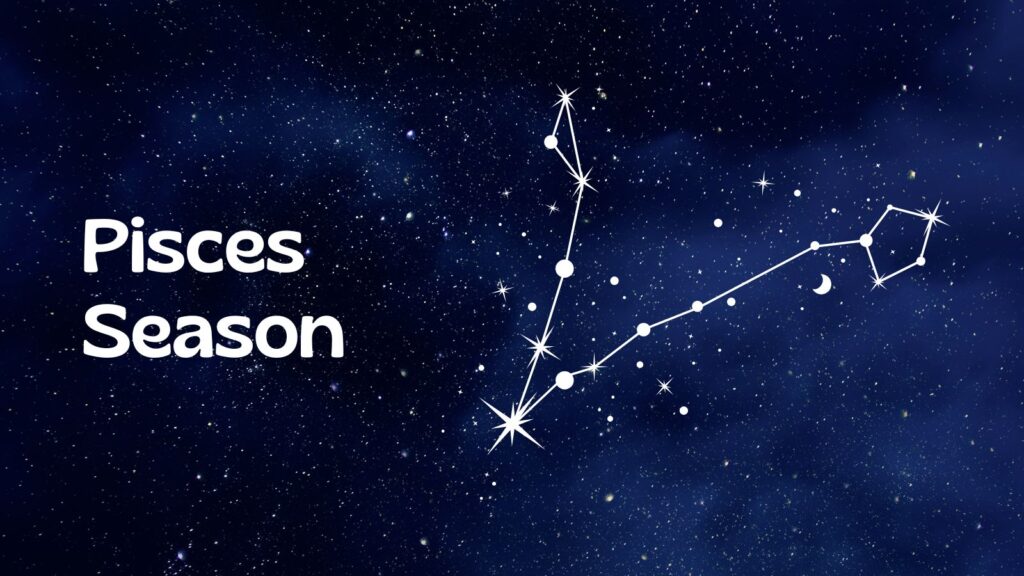Neurons to Nirvana: Understanding Psychedelic Medicines is a richly-illustrated feature documentary about the resurgence of psychedelics as medicine. It explores the promise of these brave new advances in psychopharmacology and cultural understanding guiding the viewer in a thought-provoking journey, as told by those determined to hold open the doors of perception. Through interviews with the world’s foremost researchers, writers, psychologists and pioneers in psychedelic psychotherapy, the film explores five powerful psychedelic substances (LSD, Psilocybin, MDMA, Ayahuasca and Cannabis) and their previously established medicinal and psychotherapeutic potential.
The following discussion is between three of the film’s creators:
Dr. Julie Holland is a board-certified psychiatrist in New York City. She has been quoted as an authority on MDMA in magazine, newspaper and website articles (Harper’s, Slate, SF Chronicle, LA Times, Wall Street Journal). She is featured in Neurons to Nirvana.
Oliver Hockenhull is the director/producer of Neurons to Nirvana. He works in film, video, hyper media installations, writing, and design. He’s an artist who is a documentarian, screenwriter, communication theorist, stand-up philosopher and essayist.
Giancarlo Canavesio is the producer and distributor of Neurons to Nirvana. Through his company Mangusta Productions, he has produced many award-winning feature films including The Living Wake, Explicit Ills, Fix, 2012 Time for Change, Being in the World, Starlet, and Here Comes the Night.
Giancarlo Canavesio: I’d like to ask Oliver about the genesis of this project. How did you get interested in this compound? Why did you decided to invest so many years of your life in researching those molecules?
Oliver Hockenhull: I’m from the tail end of the hippie generation. I was something like 9 years old when Magical Mystery Tour came out, when the Beatles were around. I’m of that generation, if you will. So I’ve had a personal and cultural interest in these drugs for many, many years. I also made a film on the grandfather of psychedelics, Aldous Huxley, with the approval of Laura Huxley. Huxley’s involvement with these substances has been quite crucial to my own reading of their potential and the viability of their momentous cultural import.
Giancarlo: I’d like to ask Julie the same question. How did you decide to devote your career on studying MDMA and cannabis?
Julie Holland: I was born in 1965, so I really grew up in the seventies. I definitely was seeing people smoking pot, taking acid, and tripping out on PCP. I was the youngest of 3 kids, often left to my own devices, and spent a lot of time with peers. I saw some really crazy things go down. I was intrigued by how a tiny little piece of paper could completely distort somebody’s perception and make them act in a way I’d never seen before. Even just dilated pupils fascinated me.
At a very young age, I became interested in the brain, behavior, and drugs. I was the kid who got the subscription to Psychology Today and was reading Aldous Huxley. It was like every time I had to do a report in school, I would want to do it on LSD. I just thought these things were fascinating and there was so much to learn. I knew I wanted to be a doctor. I thought I wanted to be a brain doctor. At first I didn’t know if that meant being a neurosurgeon, but once I figured out that psychiatry was really the study of drugs and human behavior, I knew I wanted to be a psychiatrist.
When I was in college, during the summer between my sophomore and junior year, I started reading all these magazine articles about this new drug. First of all, I was majoring in psychopharmacology as an undergraduate, and there was suddenly a new drug.
If you’re interested in how drugs affect human behavior, and human culture, a new drug is exciting. I was like, “Whoo-hooo!” There hadn’t been any new drugs since the cultural phenomenon of LSD decades earlier. It was the mid-eighties and not only was it a new drug, but it was a drug that psychiatrists were giving their patients as a catalyst in therapy — MDMA.
I decided to do a paper on it for my human sexuality class. It ended up being forty pages on the drug Ecstasy, on the pretense that some people thought it was an aphrodisiac. I wrote this ridiculously long, totally in depth, paper about the drug. My human sexuality teacher didn’t want to accept it. He told me, “You should give this to a medical journal. This really isn’t what I asked for.”
I chose to edit anthologies on MDMA and cannabis because, in America, they are both Schedule 1 drugs — our government says that there is no acceptable medical use — which is wrong. My life’s mission is to get these drugs rescheduled, because they’re incorrectly scheduled. I want to educate people about the fact that these 2 illegal drugs actually have the potential to be therapeutic medicine, namely known as psychedelic therapy. They are inherently medicinal, certainly cannabis is. It’s an ancient medicinal plant. You can’t all of a sudden decide it’s not medicinal when it has been used as such for at least a thousand years. We have evidence that it was around five thousand years ago; we found recently an ancient tomb with proof that cannabis was used as a medicine that dates back 5000 years. Our governmentsaying it’s not a medicine is a little bit like saying the sky is not blue. We all know the sky is blue. It doesn’t make any sense.
MDMA is a little bit more complicated. It started out as a medicine and as a catalyst to be used in therapy, and then it became abused. Because it was being abused, it was made illegal. But that doesn’t take away its medicinal value.
Giancarlo: As the readers of Reality Sandwich know, we are releasing a documentary, Neurons to Nirvana, and we want to have a clear call to action at the end of the film. We want the audience to realize that the schedule is not right, and ask, what can I do? I had a conversation with Rick Doblin of MAPS about starting a petition to encourage rescheduling. But Rick thinks that it is much more difficult to reschedule than to just continue scientific research. He basically said that even if it’s difficult and laborious, it is possible to get scientific research started for these Schedule 1 drugs. He feels that the most practical thing that needs to be done, at this point, is more research, which can be done with current scheduling. My question is: what should the call for action be for the movie? Should we start a petition, or should we ask that more money be given to research?
Julie: One easy thing that everybody can do is to out themselves. If everyone who smokes pot in America, and around the world, said, “I smoke pot, and I also pay my taxes, I have a job, and I am a soccer mom, or I’m a teacher, etc.,” I think that would go a long way toward changing things. It’s the same with psychedelics. The more people who out themselves, the less shame and secrecy there is around it, the better off we are all going to be.
Sure, donating money to research is great. I’ve actually been meeting with state Senators and Congress people and Assembly persons to show them that seventy percent of Americans think that cannabis, as medicinal marijuana, should be legalized. Maybe not everybody thinks there should be total legalization, though now the majority do. It’s not the third rail, for a politician. It’s not the kiss of death. If you want to decriminalize, or if you want to pursue harm reduction, you won’t lose your seat in office. That’s something people can do. They can set up a meeting. You call your local Congress person or Senator and say “I am a constituent in your district, and I want to come educate you about drugs.” That’s feasible.
Oliver: I’m totally in agreement, in terms of the medical aspect of this issue. But there is also a cultural aspect. The taboo against this plant is the most ridiculous scenario imaginable. It should be completely de-scheduled. We are heading in that direction, and as soon as it happens, there is a great possibility that other psychedelics will be too, as long as enough information and education takes place. Then people will be able to use them in a more informed, educated manner. Clearly, some people are abusing them, or using these things in a ridiculous manner. But other uses could be very beneficial. For example, they can be part of a spiritual practice. Besides from medicine, we need to consider people’s spiritual and religious rights to explore these drugs, particularly ayahuasca and peyote.
Julie: Freedom of religion is a smart move to make. Along the same lines, there’s also cognitive liberty and victimless crimes. If you are alone in your house, you are not hurting anybody. It’s not as if these types of drugs are toxic to your body. You’re not going to end up costing people money because you’re going to an emergency room. You’re not hurting anybody else, and you should be free to explore your own consciousness, however you see fit.
Oliver: Yes, the first right is to have the freedom of your own body and mind.
Giancarlo: Julie, you mention in a recent post that some recent scientific research has proven that cannabis is actually killing cancer cells.
Julie: There is interesting research coming from Spain and Israel. It would be nice if it could come out of America too, but our government makes it very difficult for us to prove much of anything therapeutic with cannabis. There’s a man named Manuel Guzman, in Spain, whose work is showing that THC, CBD, and other components of the cannabis plant can kill cancer cells. They can interrupt the signaling of the tumor for more blood supplies. Essentially, you can use them to cut off the tumor’s blood supply, which is called angiogenesis.
Giancarlo: In animals or in humans?
Julie: The research is on animals and in cancer cell lines, but they’ve started to do research in humans where they are actually directly administering THC to tumors, and the results show that is can shrink tumors. There are tons of anecdotal reports of cannabis shrinking tumors in children, in adults, even when it doesn’t necessarily get you high. You can juice the whole plant or use the oil of the whole plant, or you can use CBD. These things don’t get you high, but they still kill the cancer cells. Most importantly, they leave the healthy cells intact.
Most cancer chemotherapy kills anything that divides, which is one of the reasons your hair falls out and you get horrible nausea. Cannabis kills the cancer cells while leaving your healthy cells completely untouched and unharmed. The thing I always say about cannabis is, if someone discovered it today in the jungle, it would be hailed as an absolute miracle cure and everybody would be studying it. But because it’s got this baggage from the 1930’s, people are very wary of it.
Oliver: I think it’s difficult to talk about any of these drugs without emphasizing the sixties revolutions. In in way, there’s still a cultural war going on. But I think it’s clear that the side of nature is winning. Slowly, the mind-changing elements that are much less harmful than alcohol and tobacco are pulling ahead.
Julie: If nothing else, there’s a demographic shift where the older naysayers are dying off. The people who have more experience with drugs, who have seen that drugs are not so crazy or so horrible, are growing up and voting.
Giancarlo: I feel that the current culture has become much healthier – based on the way that ayahuasca is being consumed today, versus LSD in the sixties. As we all know, set and setting is important to the outcome of a session. Consider that with ayahuasca, people often need to travel to Peru or Brazil, they have to plan in advance, often they go on a diet beforehand. So, the set and setting are usually optimal. That’s why ayahuasca is becoming so popular-because it is done in the right cultural context and setting.
We hear from many sources that we are going through a psychedelic renaissance. But where are we going? If you fast forward 10 years, where will we be regarding consumer legislation and regulation? Will we have a University of Psychedelia, like Rick Doblin suggests?
Oliver: It seems to me that the issue of using a drug like MDMA for therapy is a no brainer. Certainly, as the therapists become more cognizant to the potential of that kind of drug for loosening repression and releasing feeling of guilt, it will become obvious that it’s too powerful a tool to gather dust.
The future of LSD or ayahuasca? Their widespread acceptance would mean that we are much more concerned with studying what consciousness really is. This would extend to what we can do for ourselves through meditation, yoga, and those sorts of tools — which can be applied to the psychedelic experience. The sixties was an intense exaggeration of what we can do now, if you will. It had to be. It was a real, visceral push. I’m not putting down any of the people who were involved with that — people like Tim Leary — because they had their place. The times required it. But today, for example, yoga is prominent as a tool for people in the West. If psychedelic use is grounded in the experiences available through these consciousness tools, then we could experience a spiritual renaissance. That’s what I’m hoping for – a spiritual, cultural renaissance associated with the possibilities of these substances.
Julie: I do like the yoga idea, because it really was a catalyst for change. It started off as a small niche, nothing really, and then it took off. Everybody’s doing it and everybody’s experiencing benefits from it. That is a nice model to think about.
You certainly see the polls going up every year in terms of people being more comfortable with the idea of legalizing cannabis, or allowing medicinal cannabis in their states. You’re seeing more states every year passing medicinal cannabis laws. My assumption is that it’s not going to come from the top down. It’s not going to be like, the President says, “Okay, it’s legal, so everybody go out and have fun.” It’s going to go state by state, where a state goes medical and then sees that it’s not such a big deal, and people notice that drunk driving is down and domestic violence is down. When states see that there are benefits to having medicinal cannabis, then they legalize. That’s what we are seeing in America.
Oliver: The financial aspect will push things, as well. Monetary opportunities arise in each state that legalizes. I was just reading that someone was making CBD-infused kombucha, which certainly sounds like a great product! Other states are going to want to sell these products too.
Julie: The recession was the best thing that ever happened to the medical marijuana movement. It does seem like, if anybody crunches the numbers, it’s so obvious that we are spending billions, when we could be collecting billions in taxes. So, obviously, it can’t just be about the money, but our drug policies are completely fear-based. The only way to treat a phobia is through gradual exposure. That is why I feel that everybody outing themselves is so important. It normalizes the behavior. When it’s hidden, there is all this shame and hiding, and so much adrenalin around the hiding and the shame. And there’s fear of the adrenalin, and there is paranoia — none of which is good for anybody adopting new behavior.
Giancarlo: Neurons to Nirvana will premiere on Saturday October 5 at the TriBeCa Performing Arts center in New York. We’re also going to have the technology to let people watch online at the same time. Hopefully, it’s going to be a moment when 1,000 people will speak openly and explicitly about their consumption of these compounds and how beneficial they are. I’d like to invite all the readers of Reality Sandwich to join us. I also ask that you please check out our Kickstarter for the film. Thank you very much to Oliver and Julie for your years of hard work for this cause!
Image by Patrick Hoesly, courtesy of Creative Commons license.













